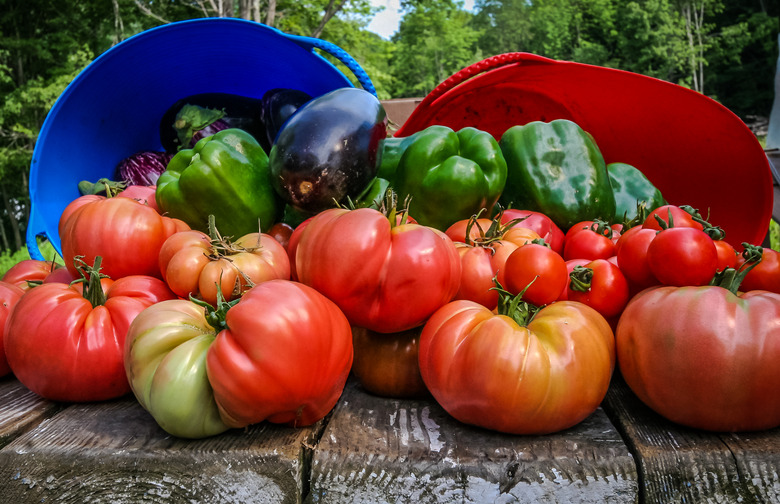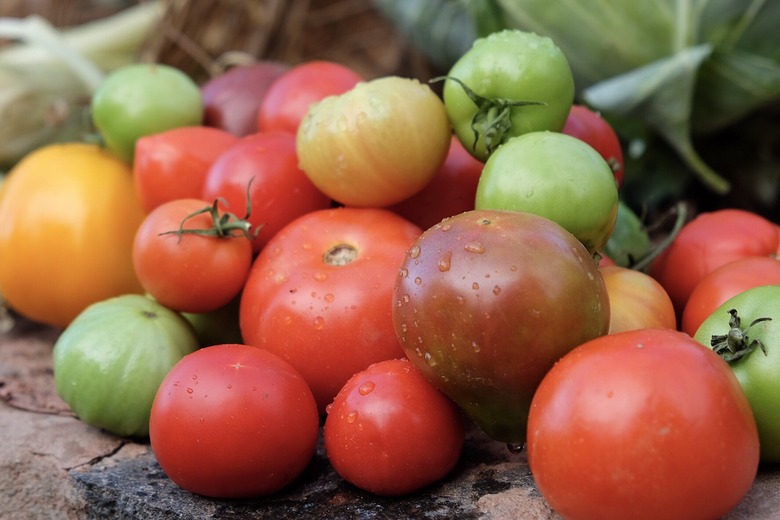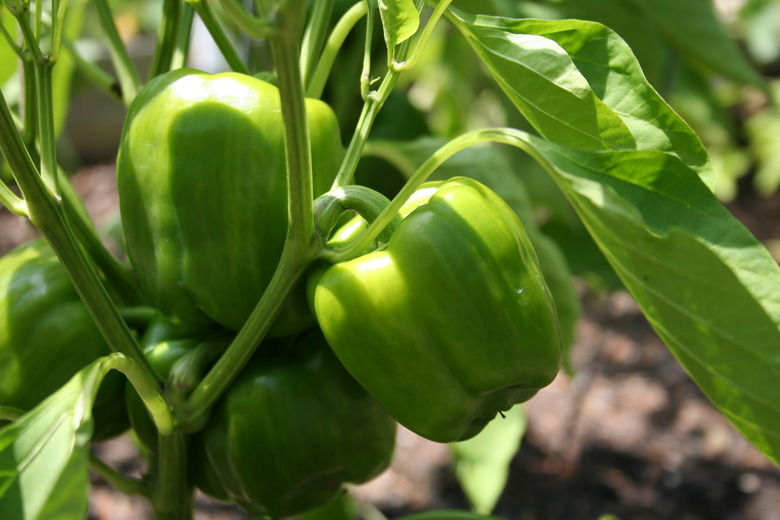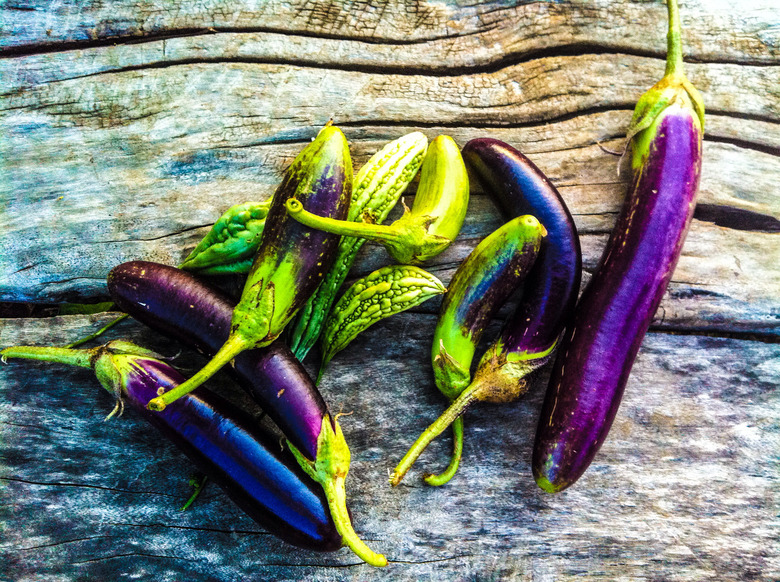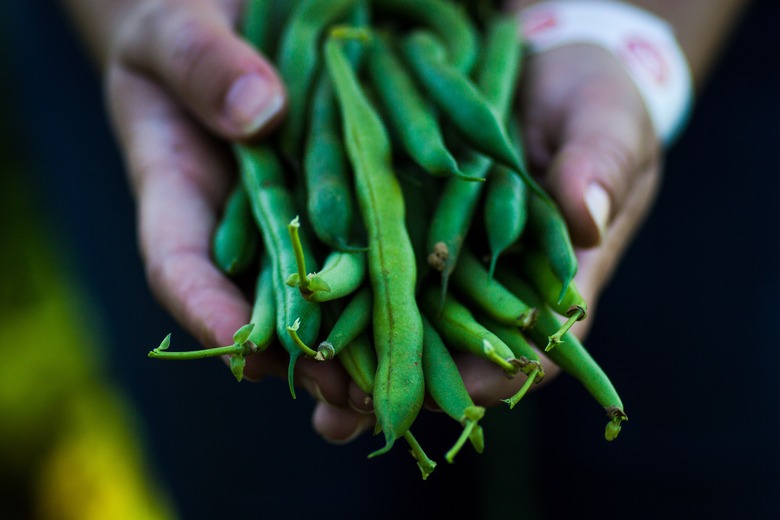5 Vegetables You Should Be Planting Right Now For Summer
If you've always wanted to be one of those enviable people who just "pops out to the garden" to make a salad, now's the time to make that reality by getting started on planting your summer vegetable garden. The key to success is in choosing warm season vegetables. They thrive when weather and soils are warm, so plant them in late spring. (Time to get on it!) For beginners, it's best to go for easy crops the first year, but you'll still have a lot to choose from. Summer garden staples — like tomatoes, peppers, squash, eggplant, and beans — are some of the most colorful and delightful garden crops. Below, a basic overview of which veggies to plant now for a thriving garden this summer.
Tomatoes
Tomatoes
Okay, we know: Technically, tomatoes are fruits, not vegetables. But don't even think of leaving them out of your veggie garden— they're easy to grow and delightfully productive. Choose between fast-growing cherry tomatoes or bigger varieties that need more time to yield a good crop. Or consider an unusual cultivar like Green Zebra, a tart tomato with really cool stripes.
When planning your garden, remember that vining tomato plants require extra room for a support system, like staking or cages. Bush tomatoes usually don't. All need regular feeding every three to four weeks and consistently moist soil.
Pepper Varieties
Pepper Varieties
Peter Piper had the right idea when he added pepper plants to his summer garden. You should do so as well, and the choices will amaze you. Peppers can be hot or sweet; red, green, yellow, or orange; big or small. And fiery peppers won't make the sweet peppers next to them hot. Peppers are in the tomato family and require the same type of attention. You'll find that it's easy to get a bright and generous crop.
Summer and Winter Squash
Summer and Winter Squash
Squash is a must-grow in a summer garden. Summer squash plants are gifts that just keep on giving, with each plant producing a couple of ripe squash every single day during peak season. Zucchini, for example, is an incredibly prolific vegetable and so easy to grow that you'll probably end up providing zucchini to your neighbors before summer's over. Winter squash is also an easy-grow veggie but you have to leave it ripen in the field longer than summer squash. That allows them to develop the tough skins that make them easy to store.
Eggplant
Eggplant
Eggplants used to be white, which is why they're named after eggs. While some are white, many are not, and many variations on the theme are available. You can find them round or elongated; white, striated purple, and even black. This meaty veggie takes between 50 and 80 days to harvest, depending on the cultivar. These plants don't like the cold, so put them in the ground after the last frosts of winter fade into memory.
Eggplants need a little elbow room, so install the transplants a couple of feet apart. Some cultivars will need staking or caging, and these may need a little more space. Harvest eggplants while they are still small.
Bush and Pole Beans
Bush and Pole Beans
Green beans rank right up there with tomatoes and peppers as favorites on American dinner plates. These are also easy to grow and offer a terrific garden display. Green bean plants climb, and the growing beans dangle from the plant like the daring young man on the flying trapeze. You can grow pole beans that rise up about as tall as you are, or you can grow bush beans that only get to about one foot tall. Pole beans are great fun and better for cooler summer regions, especially the beauteous scarlet runner beans. They require a stake or trellis. Bush beans work best for hot summers. They are planted in close rows and brace each other back to back.
Quick Tip to Get Started
Quick Tip to Get Started
So, if you've decided that you want to get a happy summer harvest going, pick a garden spot and get the soil ready for the work it has to do.
Almost all vegetables require a sunny site to thrive, so pick a plot that gets rays all day long. You'll need to shovel out the area to break up the soil if it's not garden-ready. Remove all weeds, rocks, and other impediments. Layer about four inches of good organic compost on top of your new garden area, then work it into the soil. Prepare to offer your summer veggies about one inch of water every week.
